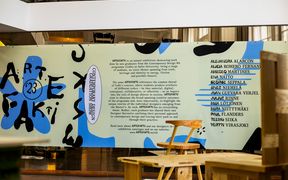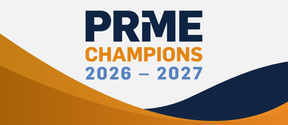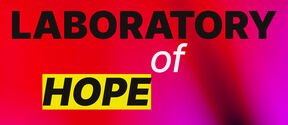An interview with the Faculty of Aalto University’s MA in Contemporary Design
It is late August and we meet in Professor Julia Lohmann’s garden on a leafy residential island off Helsinki. There is tea and plum cake and part way through our conversation, when the mist turns to a drizzle, Julia materialises an impressive assortment of broad-brimmed hats. We chat in motley headgear beside a tall rock face and lush summer greens, occasionally patting the dog Captain who navigates underfoot.
Thank you to Julia Lohmann for hosting our conversation, to Ena Naito for helping to transcribe this interview. Introduction and editing for brevity and clarity by Zoë Robertson.
ARTEFAKTI - Juan Guevara Verjel and Zoë Robertson
Anna van der Lei - Lecturer
Julia Lohmann - Professor of Practice
Kirsti Taiviola - Lecturer, Glass
Nathalie Lautenbacher - Lecturer, Ceramics
Simo Puintila - Lecturer, Industrial and Product design
ARTEFAKTI: Let’s start off with talking about the history and evolution of the programme. It used to be billed as ‘Product and Spatial Design’. What was the motivation for creating the Contemporary Design programme in the form it is now?
Nathalie: It used to be Applied Arts and Crafts, with jewellery design as one specialisation. There was a Master’s separating ceramics and glass and that was put together. So it’s a mixture of applied arts under industrial design, and ceramics and glass. But if we think of your question, the drivers for the programme, it was really the organisational defragmentation of things. I remember this word was used all the time. We have to ‘defragment,’ but at the same time try to keep one part as artistic work and crafts.
Kirsti: But I think it was also partly because in the olden days, the students had to choose a material. You are going to be a textile person, or a ceramic and glass person.
Julia: I guess the idea of Aalto University was to take away the barriers so that people could move more freely or use different materials for projects.
Nathalie: I think when we started our studies, for example, I chose ceramics at the age of 18. I decided that was where I wanted to focus and in a way it’s quite crazy to think about it now. Making those decisions at that time. Now we are provided a broader palette of materials and techniques and ways of making. You choose throughout your studies. But on the other hand, the students have a shorter time for their studies and the choice is sometimes difficult to make. For some, for those who are really sure of what they do, it’s quite easy to start and concentrate on one throughout their studies. But when you choose several it can be that the multitude of choices can be daunting. [It’s drizzling and Julia brings out a pile of different hats for everyone to cover from the rain.] Oh, you have hats.
Simo: Previously, the Department of 5 Industrial Design was funding the metal workshop and the jewellery workshop and because of that the pedagogical content was organised under them. Furniture design was funding the wood workshop. So, these different disciplines were not really collaborating too much.
Nathalie: That has really been a great change, that everything – all studios – are open for all, and they are collaborating really well.
Simo: You think about Applied Art and Design, and how narrow it was 25 years ago, and how it has now expanded into really interesting directions and merged with ceramics and a bit of product design, experimental approaches, and material research.
ARTEFAKTI: What does the term ‘contemporary design’ mean to each of you? How do you understand it? You said the choice of the programme’s name was guided by administrative motivations, but there’s also something appealing about the name.
Julia: For me, contemporary design means to actually - at a moment of great upheaval and change - reflect on what we cannot lose and what we should gain and how we should redirect our practices. Quite often what we find is that materiality as such is not considered important anymore. You know, there’s a lot of immaterial stuff, but we think that this proximity to materiality, to the tangible, is also a connection – for us to be part of nature rather than apart from it. So it’s about these experiences, and about all of this cultural knowledge that we’ve gained over thousands of years that we cannot afford to lose. But at the same time, we know that our material streams are really destructive and that we have to redirect quickly and that we need to consider how we do this without throwing the baby out with the bathwater. I think of contemporary design as really being at the cusp of that change. And what is being researched and how it affects this and whether the questions of last year are still valid or whether we need to pose new questions and whether we can find questions or answers that might be open. Maybe we just find a good question, and that’s already quite a step forward.
Nathalie: I think you answered very well for me too. I mean, in these times, in really digital times, contemporary design is about being able to have a combination and a balance between digitality and the material world. I feel that teaching ceramics is wanting to keep the connection to the past and all that we have learned in the history of design and living in this environment that is the cultural. Cultural values are also very important to keep in mind, and hands-on working and studio work is really essential for so many people to be able to express and feel with their hands and even becoming designers in a digital world, I find it really important. I think we are doing that. We are working for that in the department.
Kirsti: I think that design education also helps us to understand the world we are living in. Why things are the way they are, the physical world and the material world and what kind of things are connected to it. We can learn about material qualities and structures and production, and we can also pose questions about how it could be in the future. How can we influence change? Which is quite crucial at the moment.
Anna: What we hope is that the contemporary design programme also allows different voices to frame their own practice and are really looking to different areas of interest.
Simo: It’s kind of an attitude, in a way. Like being curious about new things, being experimental, progressive, trying to come up with something that has not been done yet, and these kinds of things. I don’t want to compare it to other Majors, but somehow there is this kind of artistic component that’s also strongly present. And not only providing that kind of artistic content, but also that different kind of attitude or approach to our environment and whatever we are dealing with.
ARTEFAKTI: It’s interesting to think of Contemporary Design as having a different kind of approach. How do we see that in the programme? What is our point of reference?
Julia: I think it can mean, for example, not setting one concrete brief but actually allowing for people to develop their own briefs within a certain structure or a given frame. We’re expecting students to actually formulate their own ideas. So, quite often in the early projects we have this experience that the students are waiting for us to give a brief and then it takes quite a while because we say, ‘No, there is no brief. You write your brief.’ And then there’s always this moment of transition like, ‘Oh, okay. I’m supposed to fill that void somehow.’ But I think this is intentional. I mean, it can be smoother in a way to actually help them realise what’s expected. But I think in a lot of the courses there is ample freedom for how you want to frame it. Maybe more than in other Masters’.
Simo: Yeah. And I think that’s definitely a better critical kind of decision. Because even though – well, my background is in industrial design and I kind of hope that at least some of the students will continue to develop their career as an industrial designer as well – I still think this experience of filling the void with your own personal kind of thinking is a huge asset for you as a designer. Even if you’re working as an industrial designer or a product designer or whatever, when you have that kind of experience, you can really ask yourself: where do you struggle? What are your strengths? What are your weaknesses? Then you become a lot stronger as a designer or artist or whatever your role will be.
Nathalie: I think the artistic component you mentioned is really important. And it’s not necessarily for making art, but rather to have a vision of yourself. We’re trying to help students to find their own way to be creative.
ARTEFAKTI: What kind of expectations do you have for Contemporary Design students, at both the stage they are entering and also upon completing the Master’s?
Julia: I think coming in, we have the expectation that they have a will to develop their own practice in a way, that they are the type of student who thrives on having a one-word brief or being able to develop their own project somehow. And that they are curious. I think the word ‘curiosity’ that Simo mentioned is very important. Wanting to expand with every project you’re doing, your current frame of what you know, really working at the limit and then also taking risks rather than playing it safe. That’s coming in. And coming out of the programme, it’s difficult to say because we are hoping that we will have students that we’ve supported in the direction they want to go, but these directions might be very different for everyone. So some people come in with a very applied set of skills and want to work more freely, and other people traverse in the other direction. The hope is that we will be able to support people on their pathway and help them actually find their voice, and find their pathway, and find what’s right for them. And, be more clear about where their strengths lie.
Nathalie: Find their originality. Yeah.
Anna: Yes. I think a lot of students that come in to study their MA already actually have quite a strong practice. So if we 7 now refer to that group, then what I also hope is that they take these two years to... I don’t want to say ‘reinvent’ themselves, but maybe they could try to fail once. Then again, we have students who know what they want and they just go deeper into the knowledge they already have. We try to cater to both, and many types of hats.
ARTEFAKTI: [Indicating the array of straw hats we are wearing.] This is the perfect example.
Simo: You look like a lamp.
Julia: I think you look gorgeous. You look really nice.
Anna: You all look like you’re from a fashion magazine.
Nathalie: Can I take a picture?
...
Read the full interview in the ARTEFAKTI catalogue:
The Making of ARTEFAKTI
The founding story of ARTEFAKTI - the annual CoDe graduation show

Read more news

The School of Business renews its status as a Champion member of the global PRME network for sustainability education for 2026–2027
Only two other Nordic universities were awarded Champion-level membership
Unite! Seed Fund 2026: Open for applications
The 2026 Unite! Seed Fund call is officially open, offering funding across three strategic lines: Student Activities, Teaching and Learning, and Research and PhD. Deadline for applications is 20 March 2026.
Apply now: Unite! Seed Fund 2026 - Student Call
The Unite! Seed Fund call for 2026 is now open for students. Apply now for up to €20,000 per project, involving at least two Unite! Universities. Deadline for applications is 20 March 2026.






